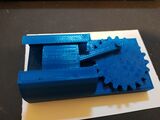777 Educational Aid
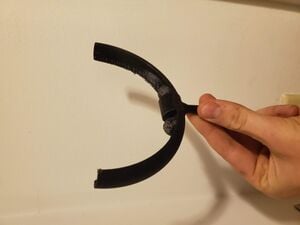
Many 3-D printing companies have developed substantial resources to help teachers [29], [30] with large collections of free learning aid designs [31], [32] [33]. 3D printers can be powerful tools for education as:[1]
- Open-source 3D printing provides a cost efficient means of STEM education.
- These technologies can also empower student-driven engaged learning.
Some benefits of 3D printing educational aids include:
- provides teachers with 3D visual aids that they can use in their classroom to illustrate challenging concepts
- 3D printers are cool so easier to get student interest as compared to 2D pictures
- Can enhance hands-on learning and learning by doing by having students make their own learning aids and all the concomitant skills associated with it (e.g. using OS CAD software)
As we know, distributed 3-D printing can often radically reduce costs and make real scientific equipment available even in schools.[2] This is particularly important for schools in developing regions.[3] In this assignment we will leverage basic science and design to help k-12 teachers make any subject easier to teach with learning aids at a low cost.
Assignment[edit | edit source]
- Identify an educational aid that you would like to design to be an open source 3D printable technology
- Make sure someone else has not already done it : Yeggi More than one of you can tackle the same technology in a different way. You may also improve upon existing designs if you do so in a significant way.
- Design 3D printable components with ONLY OS CAD packages (e.g. OpenSCAD, FreeCAD, or Blender)
- Publish a picture, stl and source code for your design on https://www.myminifactory.com/ and make sure to add it to the correct subject and grade level for https://www.myminifactory.com/category/education
- In the description on MyMiniFactory explain what your device is trying to teach, include theory, equations, links to Wikipedia etc. - whatever is relevant. Include the approximate cost of your print and then compare it to a commercial offering with their price and a hyperlink if available.
- Then add picture, link to your project page,cost savings if any, hyperlink to commercial equivalent in gallery below following the example.
- Print education aid and bring to class in bag with your name on/in it (online students drop off on due date by class time in box outside of my office) - See due dates on syllabus
Grading[edit | edit source]
- 20% Print quality
- 30% Documentation
- 25% Design (design for printing, plastic minimization)
- 25% Function - Does it work? (e.g. could it actually help teach someone something)
Automatic reductions:
- 50% no source or the use of non-OS software
- 10% per day for late
Gallery[edit | edit source]
Add your image and link the gallery below in a single line after the last one in the list
References[edit | edit source]
- ↑ Chelsea Schelly, Gerald Anzalone, Bas Wijnen, Joshua M. Pearce, (2015). Open-source 3-D printing Technologies for education: Bringing Additive Manufacturing to the Classroom.Journal of Visual Languages & Computing. 28(2015)226–237. DOI: 10.1016/j.jvlc.2015.01.004 open access
- ↑ J.M. Pearce, “Commentary: Open-source hardware for research and education”, Physics Today 66(11), 8 (2013); doi: 10.1063/PT.3.2160
- ↑ J. Gwamuri, Joshua M. Pearce, "Open source 3D printers: an appropriate technology for building low cost optics labs for the developing communities", Proc. SPIE 10452, 14th Conference on Education and Training in Optics and Photonics: ETOP 2017, 104522S (16 August 2017); doi: 10.1117/12.2269852; http://dx.doi.org/10.1117/12.2269852 open access
]
![Blank's Math Spinner Toy, $25[1]](/w/images/thumb/0/07/Mathspinner.JPG/120px-Mathspinner.JPG)
![Addition and Subtraction Cube, $13.25[2]](/w/images/thumb/8/88/IMG_1216.JPG/160px-IMG_1216.JPG)
![Animal Groups Matching, $12 [3]](/w/images/thumb/e/e9/IMG_5027.jpg/179px-IMG_5027.jpg)
![Educational Analog and Digital Clock, $11[4]](/w/images/thumb/8/80/Educational_Aid_Clock_Analog_Digital.jpg/146px-Educational_Aid_Clock_Analog_Digital.jpg)
![Volume_Educational_Aid 6$ to print, nothing comparable found.]](/w/images/thumb/d/d1/Volume_learning_aid.PNG/162px-Volume_learning_aid.PNG)

![Woodworking Joint Models, $16[5]](/w/images/thumb/b/ba/Joint_image.jpg/90px-Joint_image.jpg)


![Word Spacer Educational Aid, $10 [6]](/w/images/thumb/6/68/WordSpacerKmmessin.JPG/160px-WordSpacerKmmessin.JPG)
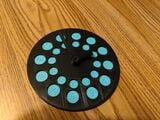
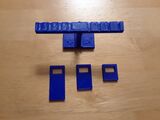
![Word Building Blocks, $39.99[7]](/w/images/thumb/a/a9/Word_Building_Blocks.png/141px-Word_Building_Blocks.png)


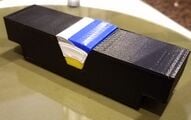




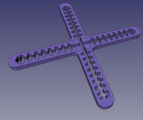
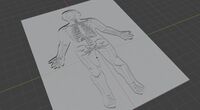



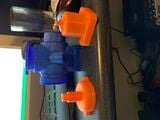

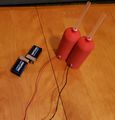

![Barnyard Sounds Matching Set, $13 [8]](/w/images/thumb/8/8d/BarnyardMatchingSet.jpg/160px-BarnyardMatchingSet.jpg)


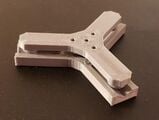


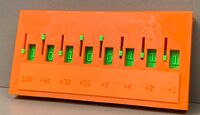
![Whiteboard Gear Ratio Demonstration Tool, Commercial variant available for $30 [9]](/w/images/thumb/b/b0/Zsa_EduAidGears.png/90px-Zsa_EduAidGears.png)



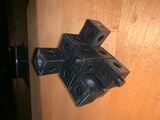

![Shapes Area/Volume Equations Educational Aid, No Commercial Variant, Cost ~$1 [10]](/w/images/thumb/7/72/Sphere_Educational_Aid_jbloomed.PNG/166px-Sphere_Educational_Aid_jbloomed.PNG)
![Balance for teaching mass, density, and force Cost $17.26 [11]](/w/images/thumb/e/ee/Balance-scale.jpg/200px-Balance-scale.jpg)

![Base Ten Blocks, [12] Commercial Variant Available for $22](/w/images/thumb/6/65/BaseTenBlocks.JPG/170px-BaseTenBlocks.JPG)
![DICE COUNTER FOR KIDS $8 [13]](/w/images/thumb/5/59/DICE1.JPG/138px-DICE1.JPG)
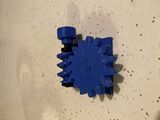

![Shape Board Educational Aid, Save $8.22 compared to [14]](/w/images/thumb/e/e6/Educational_aid_board.PNG/189px-Educational_aid_board.PNG)
![No Commercial Variant Availible, Estimated cost $2.50 [15]](/w/images/thumb/1/17/Iso.JPG/167px-Iso.JPG)
![[16] Projectile Motion Teaching aid, cost estimated $1](/w/images/thumb/c/ce/IMG_20191024_085551837.jpg/160px-IMG_20191024_085551837.jpg)
![Building Logs for Elementary Eduation, Commercial Variant found at $45 [17], Variable Unit Cost due to Parametric Design](/w/images/thumb/8/82/BuildingLogs.jpg/160px-BuildingLogs.jpg)
![Rubber Band Car, Save $9.99 compared to [18]](/w/images/thumb/9/9f/Rubberbandcar.jpg/166px-Rubberbandcar.jpg)

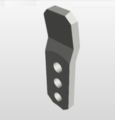

![Customizable Block Puzzle game, This cost me about 50 cents to print the game and blocks. Commercial equivalent cost $20[19]](/w/images/thumb/4/47/BlockPuzzleGame.jpg/200px-BlockPuzzleGame.jpg)
![Customizable Reading Block Toy, Cost about $3.75 for the default design but may vary based on customizer. Commercial equivalent cost $24 [20]](/w/images/thumb/c/ca/Customizable_Reading_Block_Toy.jpg/160px-Customizable_Reading_Block_Toy.jpg)
![Customizable Fracion Tiles, $1 Commercial equivalent cost $5 for tiles that do not connect [21]](/w/images/thumb/c/c9/FactionTiles.jpg/200px-FactionTiles.jpg)

![Download files from here, Prinitng costs around $1...No Commercial Variant but check out this video posted by my inspiration to get some more idea [22]](/w/images/thumb/e/ed/ConservationOfEnergy.jpg/160px-ConservationOfEnergy.jpg)

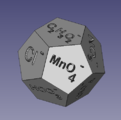




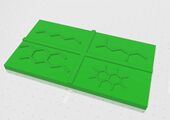

![[23], Topographical Maps range from $10-20](/w/images/thumb/d/db/IMG_3610.jpeg/160px-IMG_3610.jpeg)
![[24], Cost = $0.94 USD. A comparable object cost is $3.29. [25]](/w/images/thumb/5/56/Fgaikeneducational.jpg/160px-Fgaikeneducational.jpg)
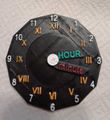
![[26], Braille Alphabet pad cost around $0.95](/w/images/thumb/f/fb/Braille_alphabet.PNG/140px-Braille_alphabet.PNG)
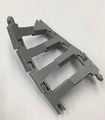
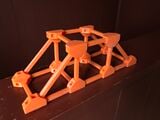
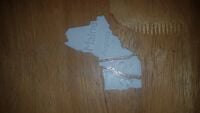




![Time Telling Blocks, [$3.38 for the total set where the commercial version costs about $15 seen here ]](/w/images/thumb/5/58/Time-blocks-behereau.jpg/160px-Time-blocks-behereau.jpg)
![Peg Number Board [27], $5 for print vs. $30 [28]](/w/images/thumb/0/00/Peg_Number_Board_RLester.PNG/152px-Peg_Number_Board_RLester.PNG)
![Centripetal Motion Educational Toy, [$1.33 for print vs. vs $10 for similar toys]](/w/images/thumb/9/9b/20191024_194602.jpg/160px-20191024_194602.jpg)
![4-Bar-Linkage, [$1.50 for the total build with no commercial equivalent]](/w/images/thumb/b/b1/4_Bar_Linkage_Stallworth.jpg/160px-4_Bar_Linkage_Stallworth.jpg)
